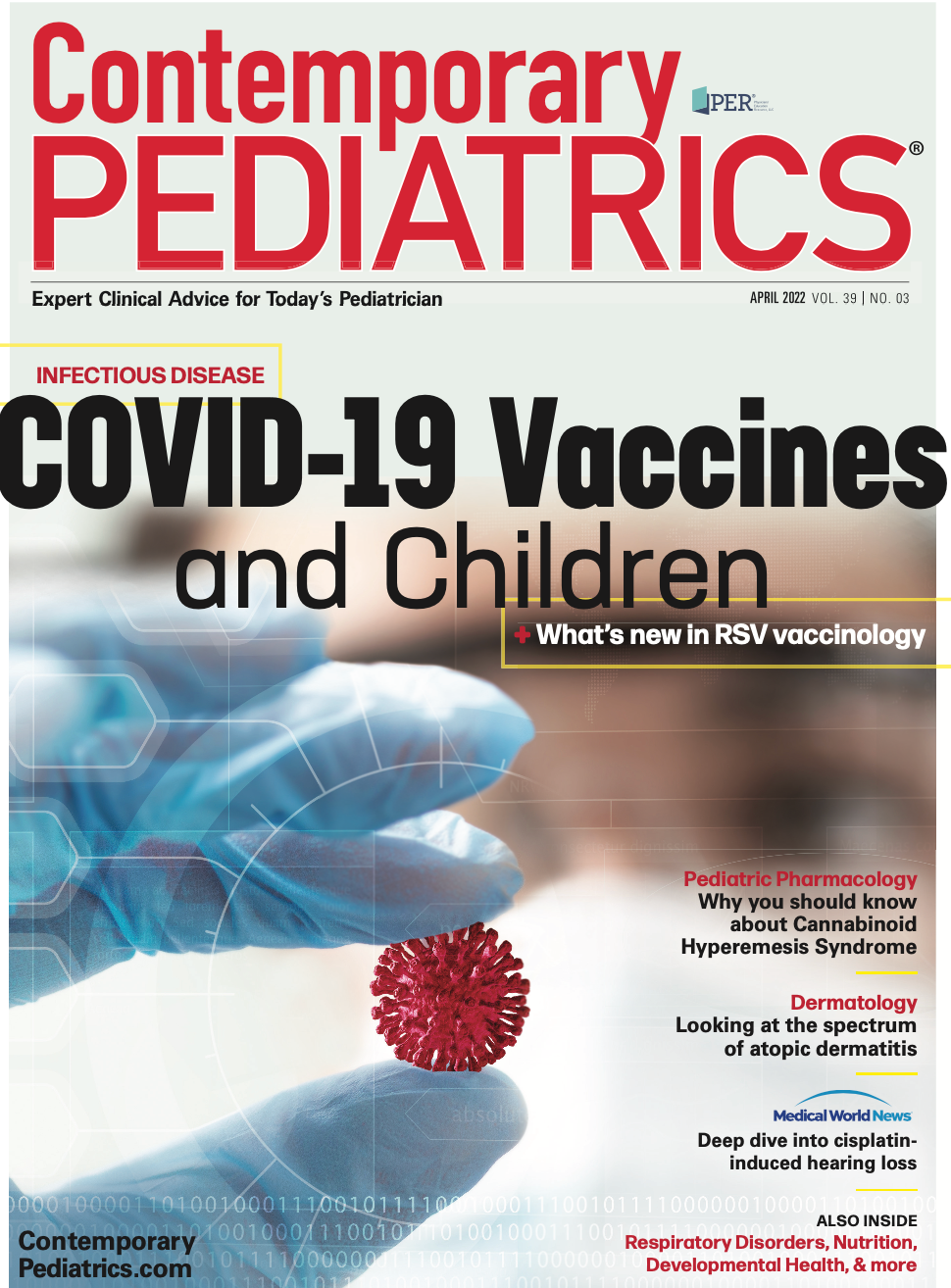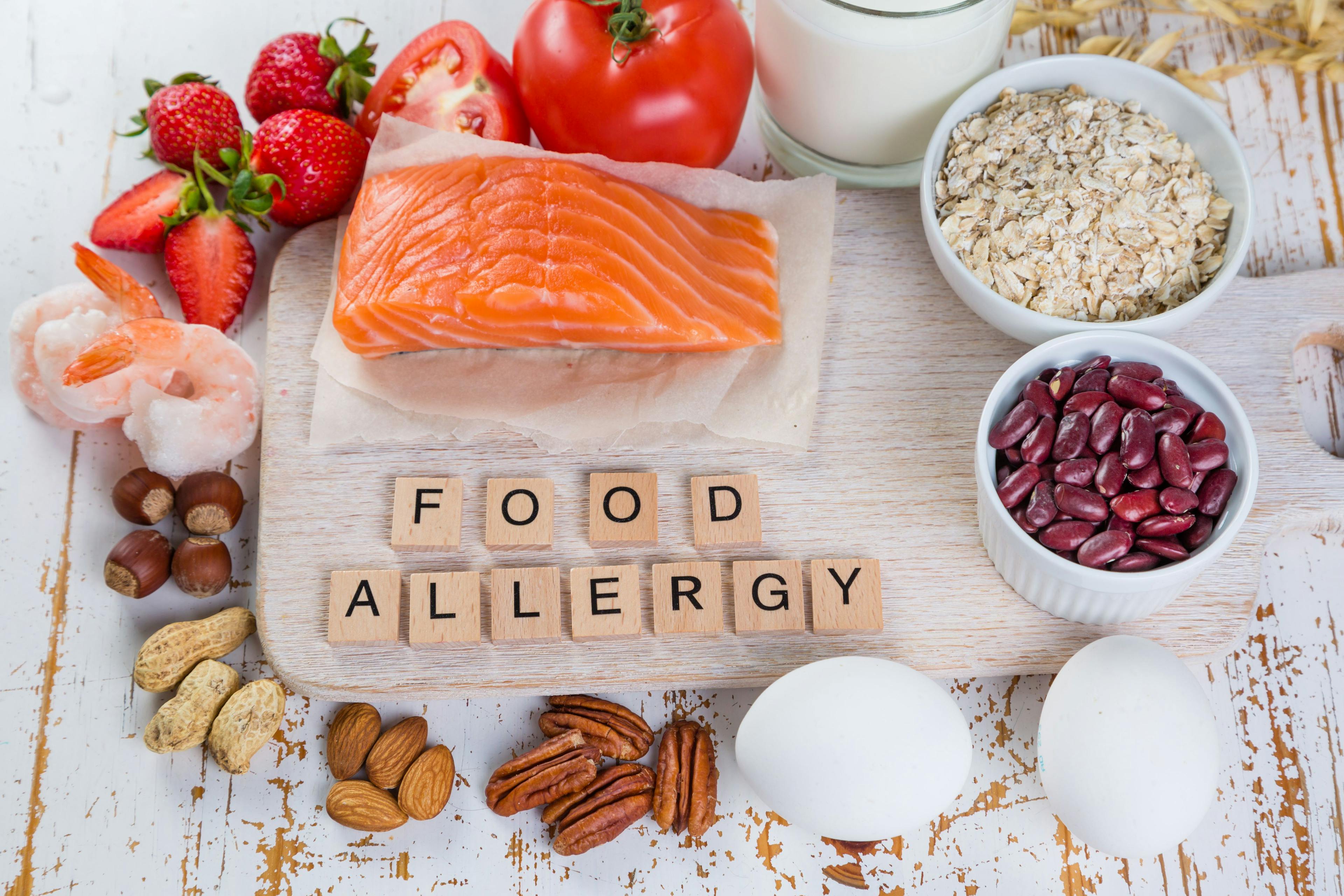Increase in food allergies signals similar rise in cow’s milk allergy
Experts note that, with cow’s milk allergies seemingly on the rise, pediatric health care providers can help parents be vigilant.
On the surface, it seems the prevalence of food allergies—or at least parents’ awareness of them—is on the rise. The Centers for Disease Control and Prevention reports that from 1997 to 2011, food allergies in children increased by about 50% overall and now affect roughly 2 children in every classroom.1,2
Cow’s milk allergy (CMA) is one of the most common food allergies reported in infants and young children, but estimating its true prevalence has proved difficult. Not all suspected cases are tested and diagnosed, but CMA prevalence is estimated at 2% for children under 4 years of age, with roughly 1.6 million children affected as of 2018.2
Despite difficulties in establishing prevalence in children, experts warn that, based on facility-based observations, CMA cases are presumably rising. This makes it all the more important for pediatricians to know how to recognize and treat these allergies.
Obstacles to pinpointing prevalence
There are several accepted methods for assessing and diagnosing CMA but no clear standard, and related data are not collected frequently on a national basis. The National Health and Nutrition Examination Survey didn’t uncover significant increases in dairy allergies between the 1990s and mid-2000s, but these figures are estimated only once per decade, and many health facilities continue to report higher numbers of food allergies, including dairy.
Together, these issues present a challenge to establishing overall prevalence and a benchmark for surveillance. Testing methods have improved over the years, too, raising the question of whether more accurate results and a better understanding of gut health may be skewing the perception of a rise in allergy prevalence.
“The American diet has been changing [with more processed foods and less fruits and vegetables], which is affecting the microbiome of the gut,” said Sarah Lowry, MD, a pediatric gastroenterology fellow at Johns Hopkins Medicine in Baltimore, Maryland. “This may be contributing to immunogenicity and allergies, but more studies are needed for this to be identified as a true cause. I think there is a higher prevalence overall—again, based on changes in the gut microbiome, diet, and exposure—but there are also better testing methods.”
Diagnosis begins with a parental history report and recognition, which Lowry said have improved as a process overall. Parent groups on social media have also raised awareness and opened the door to more questions about these allergies, Lowry said.
CMA is the second most common food allergy in children, behind peanut, Lowry said. It presents earlier—around age 2 years—than other food allergies but usually produces a less severe reaction. Considering the limitations of reporting, overall prevalence of dairy allergies in children is estimated at 5%, representing about 20% of all food allergies in children, Lowry said.
Varying symptoms in reactions to CMA
Different symptoms and prevalence rates characterize the various types of CMA, said Vivian Hernandez-Trujillo, MD, FAAP, FAAAAI, FACAAI, a pediatric allergist and division director of the allergy and immunology program at Nicklaus Children’s Hospital in Miami, Florida. She offered the following summary:
- IgE mediated: This type can affect the skin as urticaria, angioedema, or eczema, as well as cause respiratory symptoms (eg, cough, nasal congestion, rhinorrhea) and gastrointestinal symptoms (nausea, vomiting, diarrhea). A combination of several symptoms can lead to anaphylaxis in patients with severe CMA.
- Non-IgE mediated: Infants and children with this type of allergy may develop vomiting and blood or mucus in the stool, similar to the symptoms seen with food protein– induced enterocolitis.
- Lactose intolerance: This is an enzyme deficiency of lactase as opposed to a true allergy to cow’s milk.
Hernandez-Trujillo noted that CMAs can resolve by adulthood, which also presents a challenge in estimating their true burden. Lowry noted that study results suggest that up to 80% of teenagers develop tolerance and essentially outgrow their CMA allergy.
“While rates of food allergy are increasing, it is not clear whether rates of cow’s milk allergy are increasing,” Hernandez-Trujillo explained. “Because the natural history of cow’s milk allergy leads to resolution in many patients, it is difficult to say whether increases are occurring over time.”
CMA prevalence also appears to depend on the test used for diagnosis, she adds. Current data show prevalence rates based on the following methods3:
- 1.2% to 1.7%, self-reporting
- 0.2% to 2.5%, skin prick testing (SPT) alone
- 2% to 9%, serum IgE testing (sIgE)
- 0% to 2%, symptoms and sensitization (SPT≥3mmorsIgE≥0.35kU/L)
- 0% to 3%, food challenges
Although data suggest that food allergies overall are rising, Hernandez-Trujillo said, it is not really clear if that includes CMAs, specifically. Geographic locations can alter prevalence too, she added.
Assessing CMA at the patient level
Because dairy allergy is a common allergy that is usually first noticed by the parent, Lowry emphasized the importance of a detailed history as part of the assessment. Additional testing and referral to a pediatric allergist are common after dairy allergies are suspected, but even then, avoidance remains the primary treatment strategy, she added.
When a true CMA is confirmed, Hernandez-Trujillo said, it is crucial that the child avoid not only avoid milk but also other dairy products, including butter, yogurt, cheese, and ice cream. “Any product with cow’s milk should be avoided, especially in patients with severe cow’s milk allergy or anaphylaxis,” Hernandez-Trujillo said. “Food-label reading is essential.”
Avoidance isn’t always enough, though. Hernandez-Trujillo emphasized that pediatricians must teach parents how to handle severe reactions when accidental exposure occurs.
Moving forward and mitigation
It’s important to monitor children with dairy allergies closely, because they have a higher risk of other food allergies too, Lowry said. Dairy allergies also appear to come with a higher tolerance, so monitoring patients as they age and offering food challenges later may help reduce allergy prevalence in later childhood or adulthood, she said.
Managing CMAs in the long run requires vigilance, with individual surveillance and education, Hernandez-Trujillo notes. Many nutritional alternatives to cow’s milk are available, and parents can benefit from having both a pediatrician and an allergist involved in their child’s care. Nuances of CMA can vary among patients, and coordinated care efforts can help identify where exceptions to avoidance might be made. Although some patients must avoid all dairy, others may need to steer clear of only uncooked forms, she said. Baking alters some of the milk proteins and reduces allergenicity.
“Depending on the patient’s clinical presentation and severity, pediatric allergists can work with pediatricians to identify patients who may be able to tolerate some form of cow’s milk,” Hernandez-Trujillo said. “The majority of pediatric patients will outgrow the cow’s milk allergy over time, and follow-up to determine when they outgrow the CMA is essential. For patients who do not outgrow the CMA, continued strict avoidance and immediate access to epinephrine are needed.”
Lakiea Wright, MD, MPH, a board-certified allergist and immunologist at Brigham and Women’s Hospital in Boston, Massachusetts, said that although the main treatment strategy for CMA is avoidance, an epinephrine autoinjector should be prescribed for individuals who have a physician-diagnosed IgE-mediated allergy. She adds that one large study of parent-reported food allergy found that just 26% of children with CMA had a current epinephrine autoinjector prescription.
“Being prepared to treat a severe allergic reaction is also imperative,” Lowry added. “For patients with severe reactions or anaphylaxis, strict avoidance of cow’s milk products and carrying injectable epinephrine at all times is essential.”
Caregivers also need to be educated on milk allergen avoidance, as well as how and when to use an epinephrine autoinjector. Investigators are testing different protocols for CMA immunotherapy to help achieve a maintenance dose and develop a tolerance for milk proteins, according to Wright. Until those tools are available, she said, it’s key to educate parents about CMA, including true allergy vs intolerance, and the importance of learning how to introduce common foods early to prevent common food allergies.
References
1. Food allergies. Centers for Disease Control and Prevention. Updated February 24, 2022. Accessed February 18, 2022. https://www.cdc.gov/healthyschools/foodallergies/index.htm
2. Gupta RS, Warren CM, Smith BM, et al. The Public health impact of parent-reported childhood food allergies in the United States. Pediatrics. 2018;142(6):e20181235. doi:10.1542/peds.2018-1235
3. Flom JD, Sicherer SH. Epidemiology of cow’s milk allergy. Nutrients. 2019;11(5):1051. doi:10.3390/nu11051051


























